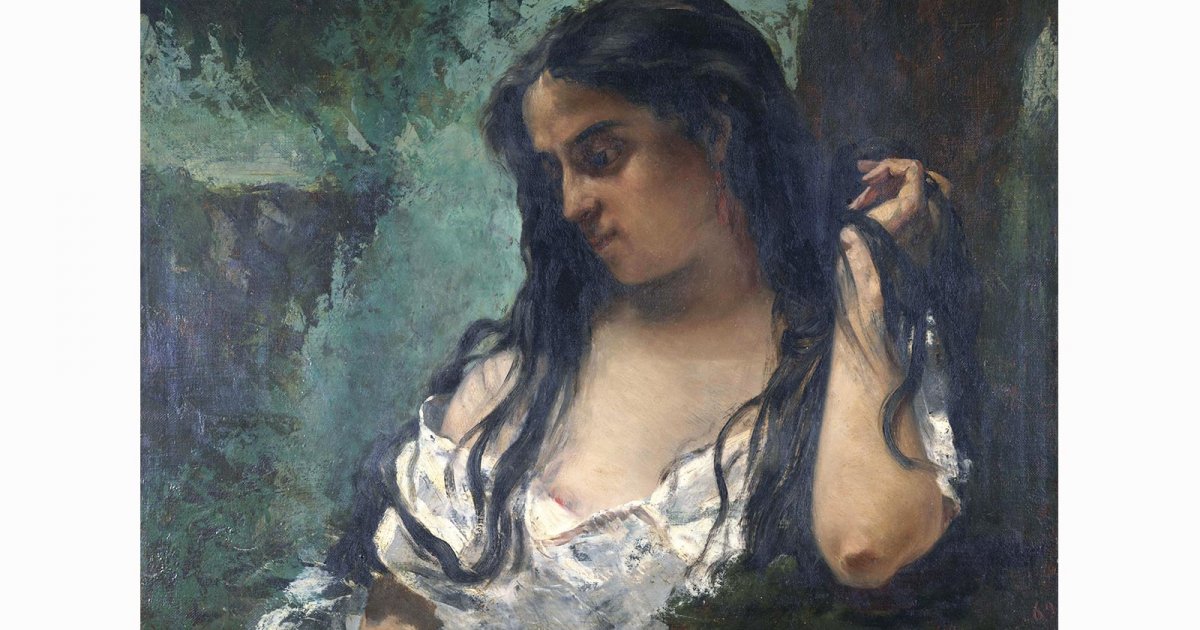MUSEUM OF WESTERN ART, Courbet Gypsy
 Language: English / USA
Language: English / USA
The French artist Gustave Courbet was one of the finest painters of the 19th century, with a particularly significant influence on the culture of his time. He was the leading figure of Realism, and indeed the painter who first coined the term to describe the movement.
Courbet was born in 1819 and died in 1877. He inspired not only painters, such as Édouard Manet and Cézanne, but also writers, poets and dramatists. He was the first to portray reality, without concealing anything, in landscapes, portraits, scenes of historical events and nudes, and many of his subjects were poor and ordinary people, whom he painted to highlight the conditions they lived in.
The aim of Courbet’s works was achieved thanks to the spontaneity of the subjects and the actions depicted, as you can clearly see in the painting entitled Gypsy in Reflection, dated 1869, when Courbet was already a well-known artist.
If you look at the downward expression of the young gypsy, and the way she is distractedly touching her hair, you can easily see she is not posing for the portrait; it rather looks as if the painter were spying on her. Also noticeable is the sensuality of her almost-bare breasts.
Now press pause and move on to admire the world-famous work from 1858, entitled Sleeping Nude.
Here again, the nude woman, barely covered by a sheet, is painted asleep, as if Courbet were peeping into her bedroom. In addition to the realism of the details, this is another reason Courbet’s paintings were considered scandalous.
You can see two other works by Courbet in the room: Horse in a Stable, from 1873, featuring not only the horse, but also the humble stable boy, a further example of the French painter’s favorite subjects, and Waves, painted around 1869 on the English Channel, the subject of numerous works by Courbet. The enormous talent of the artist is evident in the authentic, convincing details of the huge waves rising up and dashing against the cliffs.
An interesting fact: if you take a close look at Courbet’s canvases, you’ll see that in some cases the paint is very thick. He often spread the colors with a spatula rather than a brush, a technique that was subsequently adopted by some Impressionists.



